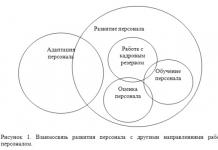Third Eye (Part 3)
Devices for searching and diagnosing underground utilities
Thanks to multi-directional antennas, the sensitivity of devices is increased and the likelihood of errors is reduced. The operator no longer needs to zigzag around the area under study - he just has to press the power button and select the type of route he needs, and the device itself will find it and display it on the screen. This approach allows the locator to be used even by workers with low qualifications and virtually no special training.
Acoustic leak detectors (locators)
A number of methods for locating underground communications based on acoustic location are widely used. Often such methods are used to search for water and gas leaks in pipelines made of any metallic and non-metallic materials. That’s why leak detection devices are called leak detectors.

Acoustic inactive method
As liquid or gas flows out of a pipe, it makes noise that can be detected by an acoustic leak detector with a passive detection function, in other words, an inactive acoustic detector. Acoustic microphone sensors, which can be contact, applied directly to the ground, or non-contact, pick up sound waves propagating along the ground. As the operator approaches the leak, the noise becomes louder. By identifying the point where the sound is strongest, you can determine the location of the leak. This method works when the pipeline is located at a depth of approximately 10 m.

If you have access to the pipe through manholes, you can listen to the noise by attaching a microphone to the pipe or valve handle, since sound waves travel better through the pipeline material. Using this method, you can identify the section of pipe between two wells where there is a leak, and then, based on the sound strength, which of the wells it is closer to. The accuracy of the method is low, but it can detect leaks at a much greater depth than when listening from the surface. If the device has a pseudo-correlation function, it can calculate the distance to the leak site based on the difference in sound intensity and refine the search result.
The device usually includes headphones, a powerful sound amplifier (gain up to 5000–12,000 times), an interference filter that passes sounds only of the frequency that are stored in its “memory,” as well as an electronic unit that processes and records the results and can be reports. Some devices are compatible with a computer.
It is believed that the use of leak detectors can reduce the cost of eliminating accidents on utility pipelines by up to 40–45%.
However, acoustic leak detectors have a number of disadvantages. The research results are highly dependent on the presence of noise interference, so they work best in quiet conditions when examining shallow pipelines - up to 1.5 m. However, modern instruments are equipped with digital signal processing microprocessors and filters that filter out noise interference. It is necessary to know exactly the route of laying the pipeline under study in order to pass exactly over it and listen to the noise from the leak at different points.

Acoustic active method - using a shock generator
In a situation where it is necessary to find a non-metallic pipe and therefore an electromagnetic locator cannot be used, but some part of the pipe is accessible, one alternative is the sonic active method. In this case, a sound pulse generator (impactor) is used, which is installed in an accessible place on the pipe and, using the impact method, creates acoustic waves in the pipe material, which are then picked up from the surface of the earth by the device’s acoustic sensor (microphone). This way you can determine the location of the pipeline. Of course, this method can also be used on metal pipes. The range of the device depends on various factors, such as the depth and material of the pipe, as well as the type of soil. The strength and frequency of the blows can be adjusted.

Acoustic electric - by the sound of an electric discharge
If a spark discharge can be created at the site of cable damage using a pulse generator, then the sound from this discharge can be listened to from the ground surface with a microphone. For a stable spark discharge to occur, it is necessary that the value of the transition resistance at the point of cable damage exceeds 40 Ohms. The pulse generator includes a high-voltage capacitor and a spark gap. The voltage from the charged capacitor is instantly transmitted through the spark gap to the cable, the resulting electromagnetic wave causes a breakdown at the site of cable damage, and a click is heard. Usually one pulse is generated every few seconds.
This method is used for locating cables of all types with a burial depth of up to 5 m. It is not recommended to use this method to search for damage in cables in a metal sleeve laid openly, since sound travels well through the metal sheath and the accuracy of localizing the location will be low.

Ultrasonic method
This method is based on the registration of ultrasonic waves that are inaudible to the human ear. When a liquid or gas under high pressure (or vice versa - suction at high vacuum) exits the pipeline through cracks in welds, leaks in shut-off valves and seals, friction occurs between the molecules of the leaking substance and the molecules of the medium, as a result of which ultrasonic frequency waves are generated. Due to the short-wave nature of ultrasound, the operator can accurately locate leaks even in high noise environments, in above-ground gas lines and underground pipelines. Ultrasonic devices are also used to detect faults in electrical equipment - arc and corona discharges in transformers and distribution cabinets.
The ultrasonic leak detector includes a sensor-microphone, an amplifier, a filter, and an ultrasound converter into audible sound, which is broadcast by headphones. The closer the microphone is to the leak, the louder the sound in the headphones. The sensitivity of the device is adjustable. The LCD screen displays the scan results digitally. The kit may include a contact probe, with which you can also listen to vibrations. To actively identify leaks, the device includes a generator (transmitter) of ultrasonic vibrations, which can be placed in the object under study (for example, a container or pipeline), the ultrasound emitted by it will come out through leaks and cracks.
Advantages. The method is simple; searching for leaks does not require a complex procedure; training to operate the device takes about 1 hour, and the method is very accurate: it allows you to detect leaks through the smallest holes at a distance of 10 m or more against the background of strong extraneous noise.

Correlation method

In this case, two (or more) vibroacoustic signal sensors (piezoelectric sensors) are installed on the pipe on both sides of the leak (for example, in two wells or on a shut-off valve on the surface of the earth). The signal from the sensors is transmitted to the device via cables or radio. Since the distance from the sensors to the leak location is different, the sound from the leak will arrive at them at different times. Based on the difference in the time the signal arrives at the sensors, the electronic correlator unit calculates the cross-correlation function and the location of the damage between the sensors.
This method is used in noisy areas that are difficult for acoustic scanning, such as urban and factory areas.
The accuracy of the calculation depends on the accuracy of measuring the travel time of signals by the device, the accuracy of measuring the distance between the sensors and the accuracy of the speed of sound propagation through the pipe. According to experts, when these measurements are carried out correctly, the reliability, sensitivity and accuracy of the correlation method significantly exceed the results of other acoustic methods: the deviation is no more than 0.4 m and the probability of detecting leaks is 50–90%. The accuracy of the result does not depend on the depth of the pipeline. The method is very resistant to interference.
The disadvantage of the correlation method is that the results are distorted in the presence of inhomogeneities in the pipes: blockages, bends, branches, deformations, sudden changes in diameter. Correlation leak detectors are expensive and complex devices that can only be operated by specially trained specialists.

Gas detectors
Gas detectors are used to detect gas leaks from pipelines. The micropump, which is part of the device, pumps an air sample from the location being tested. The selected sample is compared with reference air (for example, using the heating coil method: when heating a sample with gas and air, the temperature of the coil will be different), and the device records the presence of gas in the sample. There are also gas detectors (comparing sample and reference air) based on different principles. Such equipment is capable of capturing gas or other dangerous volatile substances even if the air contains only 0.002% of it!
The gas detector is a lightweight and compact, convenient and easy-to-use device. However, it is very sensitive to the ambient temperature: if the temperature is too high or low, its performance decreases and may even become zero, for example, at temperatures below –15 and above +45 ° C.

Complex devices
As we can see, each type of locator has certain limitations and disadvantages. Therefore, for services operating underground communications, modern locating devices are often complex, consisting of equipment of different types, for example, together with an electromagnetic locating device, they may include an acoustic locator, ground penetrating radar and pyrometer, and the acoustic receiver may also have a channel for receiving electromagnetic signals. The search can be carried out simultaneously at the frequencies of electromagnetic and radio waves, or the device can switch to modes of receiving magnetic, radio or acoustic waves. Moreover, the modular design of the devices allows the complexes to be completed individually for each client company, depending on its specific tasks. The use of complex instruments increases the likelihood of accurately finding the location of an object, facilitates and speeds up the work on maintaining underground communications.

Innovations in the equipment industry for searching underground communications
Recording coordinates of search objects in GPS/GLONASS
Some modern route-finding devices have the ability to determine the coordinates of a detected object using GPS/GLONASS and record them (even online) in a database of a digital site plan created by computer-aided CAD design, indicating the identified utilities there. In parallel, the data is sent to a computer at the company's head office. The information can be presented in the form of simple labels to help the excavator operator visually navigate the layout shown on the machine's display. It will be even easier for the operator if the excavator control is partially automated and connected to GPS/GLONASS - the automation will help avoid damage to communications.

New line-finding equipment
Leading developers of this equipment offer scanners that scan a construction site and, based on an analysis of the characteristics of the local soil and other conditions at the construction site, automatically indicate the optimal frequency at which it is recommended to locate underground utilities. To achieve the best sensitivity, some locators are equipped with a function for automatically selecting the optimal signal frequency - this is convenient in “dirty” air conditions and when several paths pass underground at once.
Devices with two outputs have appeared, which can now be connected and conduct research simultaneously on two utilities.
The devices are equipped with a high-contrast liquid crystal display, the image on which is visible even when illuminated by direct sunlight, the information content of the displays increases: all the necessary parameters are displayed in real time: the depth of communication, the direction of movement towards it, signal intensity, etc. The device screen can even a visual diagram of the location of communications is formed, the route finder is able to simultaneously “see” up to three underground communications, “drawing” a map of their location and intersections on a large display.

Ground Penetrating Radars (For more information about ground penetrating radars, see Part 1)
The operation of GPR is based on emitting an electromagnetic pulse into the ground and recording the reflected signal from underground objects and environmental boundaries with different electrophysical properties.
The areas of application of ground penetrating radar are enormous: it allows you to determine the depth of communications, the location of voids and cracks, waterlogging zones and groundwater levels, the nature of geological boundaries, decompaction zones, illegal cuttings, defects in the subgrade, the presence of reinforcement, mines and shells, as well as other objects .
GPR has become widespread in the field of searching for underground communications, largely due to the fact that this method detects communications made of any material, including non-metallic ones.

To search for underground communications, a georadar with antennas having an average central frequency (200–700 MHz) is selected. Searching at such frequencies provides a probing depth of up to 5 m, and also allows you to find cables and pipes of small diameter.
If it is necessary to survey large areas, ground penetrating radar systems with an array of antennas installed on a vehicle are used. Such systems scan up to several hectares per day.
Modern georadars can find underground communications in real time and can be used together with GPS equipment, which allows them to be tied to the area and, using the obtained coordinates, transfer georadar data to CAD systems, as well as plot detected communications on existing diagrams.
For a long time, it was believed that ground penetrating radar is a difficult technology to understand and control, but with the advent of modern technologies and advanced software, the situation has changed radically. GPRs from leading manufacturers have maximum automation of data acquisition and interpretation, which eliminates errors associated with the human factor. Thus, today GPR is an indispensable assistant in searching for underground communications and can rightfully be considered the “third eye” of a survey engineer.

Citizen K. had long dreamed of settling somewhere in nature, far from the noisy bustling civilization of a big city, among the peace and quiet of the harmony of the world. And so his dream came true: he bought a small plot of land on the outskirts of the village for construction, in a good location and even with a small abandoned garden... but then he had to face such a problematic issue as finding pipe routes and cable lines, without knowing where are they located:
- During construction, you can damage them, and if the cable is live, you can put your own life at risk;
- You can forget about connecting to electricity, gas and water supply, without knowing where it runs.
But how to find these unfortunate lines? Tear up all the soil and search at random?.. Not at all! You just need to turn to the help of such a useful device as a locator, which allows you to find lines quickly and safely. Today the device can be purchased in every specialized store; you can make a locator with your own hands. And we will tell you how later. But first, it’s worth figuring out what kind of device this is, a locator.
A little theory
So, a locator is a unique device that allows you to detect a cable line or pipes. Modern devices are divided into two types based on their operating principle;
- Contact principle;
- Induction variety.

The contact principle is used in the event of a break in a live cable.
The device, operating on the induction principle, is capable of detecting both live cables and passive tracing, that is, underground communications that do not produce active signals. The induction method is more complex and is based on the device capturing high frequencies and recording these indicators on a special indicator.
Locators are also divided into single- and multi-frequency. The first ones are the most acceptable option; such devices are easy to install yourself, and they are used to determine communications located underground in the case when some routes do not intersect others, and thus the signals emanating from them do not overlap.

Multi-frequency devices are a more complex design and are used to determine route signals in the case of high density cable lines and pipelines. Multifrequency devices are able to determine the frequency specified in the program without straying to others. Modern devices are equipped with software, which greatly facilitates the work, which for the user consists of one press of a key and reading the received information displayed on the indicator.
Assembly technology
The device has a simple design and consists of two components - a receiver, which receives a signal, and a generator, which regulates the operation of the device. The stronger the generator, the more powerful the device will be and the greater the distance at which it can detect lines. Thus, a device powered by a 24 V battery is capable of tracing an area of 4 km and operating for about a hundred hours without interruption. The diagram for a locator working on this principle is shown below.
As can be seen from the drawing, the device is equipped as follows: a modulator and a generator are assembled on transistor T1, P14. Under the conditions that the switch comes into an open state, the transistor with the base circuit creates a frequency generator of 1 kHz. And when the circuit is turned on, even partially, it becomes possible to increase the load on the device. Thus, when the capacitor is turned on, the power of the generator increases sharply, and it begins to operate in the VHF range.

To construct a cable line locator with your own hands, you need to carefully work out its second part, the receiver.
The most important condition here is the fact that the magnetic antenna is tuned to the audio frequency voltage of the generator. The signal passing through the transistors creates a stable circuit, and the transistor stages provide the necessary amplification, which guarantees uninterrupted operation of the device.
To mount the cable locator shown in the diagram above, you will need the following:
- We take a getinaks board, which will be the basis of the future device.
- Install the power terminals on the front panel.
- We wind the first transformer on a ferrite ring (diameter 0.8 cm), and the second on a steel core.
When assembling, follow the drawings to avoid mistakes.
How to make a locator from an old player?

In many people’s basements and mezzanines you can find a lot of interesting little things that, with skillful modification, can still serve their owner for many years. So, from a simple old player you can construct a locator.
Add the power terminals and move on to the search coil. To do this, we disassemble the ILV and remove the contact coil. To remove the relay plate, you need to hold it in a vice and use a hammer to knock it out of the coil. This work will take no more than a couple of seconds. Now that all the parts for the future device have been received, we connect the windings and insert a rod into the core, which we clamp on both sides.
Any handy object can act as clamps, for example a plastic tube, which just needs to be sharpened a little and bent so that the part fits in size and performs its function as a clamp. Let's spend a couple more minutes adjusting the entire device, checking the wiring, connectors, and reliability of the design. Then we solder the wire to the coil, which should then be connected to the amplifier.
The work is ready. As you can see, this is not at all difficult for those who have at least basic knowledge of electronics.
Now you know how to assemble a locator with your own hands; the diagrams and step-by-step instructions will help you complete this simple job quickly and efficiently. And all we can do is finally wish you good luck and a good day!
The importance of accurate information.
Information about the location and actual condition of underground pipelines and cable lines is the most important result of the survey of these communications.
The reliability and accuracy of survey results are the only characteristics that can be of real value. Inaccurate or distorted information can cause errors in the interpretation of the data obtained and cause unnecessary costs. It is even worse if people's lives and health are endangered as a result of incomplete or inaccurate survey data.
The final conclusion about the condition of an object or its individual element can be made on the basis of its visual inspection, however, this seems impossible for underground cables and pipes. Experience, knowledge of the work area being inspected, the use of drawings or diagrams, as well as the effective use of route finders can provide information that will make it possible to give an almost accurate conclusion about the condition of the elements of the object. In some cases, there may be areas where it is impossible to accurately determine the status of communications. These areas should always be localized to allow further investigation.
Locating underground pipelines and cables is a very responsible activity: all operations must be carried out methodically, accurately and with great attention. In this series of articles, I will try to provide structured and, if possible, complete information about the methods of using route finders to obtain accurate and reliable data.
Methods for locating underground cables and pipes
Currently, the most widespread methods for detecting and tracing underground cables and pipelines are:
1 Available documentation
Diagrams and drawings available from utility companies or city administration contain a wealth of information about the presence and position of underground pipes and cables. When conducting a site survey, it is first important to obtain any available information and available documentation. The information may be (and usually is) inaccurate or incomplete, but this information will provide the operator with a starting point when performing a site survey. In addition, it is much easier to confirm or supplement existing information than to start surveying the area “blindly”. Before work begins on site, any information can be very useful, even if it only gives an idea of what to expect at the site.
2 Georadars
Ground penetrating radar is a radar that, unlike the classic one, is used to probe the environment under study, rather than the airspace. The environment being studied can be land (hence the most common name - ground penetrating radar), water, building walls, etc.
Modern georadar is a complex geophysical device created using certain technologies. The main unit consists of electronic components that perform the following functions: generating pulses emitted by the transmitting antenna, processing signals coming from the receiving antenna, synchronizing the operation of the entire system. Thus, the georadar consists of three main parts: the antenna part, the recording unit and the control unit. The antenna part includes transmitting and receiving antennas. The recording unit is understood as a laptop or other recording device, and the role of the control unit is performed by a system of cables and optical-electrical converters (according to Wikipedia).
 |
| GPR |
Methods for searching underground communications, based on the use of electromagnetic waves, have been developed to accurately detect, determine the dimensions and distance (depth) to underground objects. The location of underground communications, in particular plastic pipelines or fiber-optic communication cables, has become a reasonable and natural development of this method. Obviously, using radar it is quite difficult (in most cases, almost impossible) to distinguish plastic pipes with water from dense soil (for example, wet clay and earth). However, ground penetrating radars provide an approximate picture of the location of underground cables and pipes in various types of soil. At the same time, even in favorable conditions for the use of radars, it is necessary to have an appropriate understanding of what is or should be underground.
The high conductivity of fine-grained sedimentary rocks - clays and sediments - sharply reduces the capabilities of the device, and rocky and heterogeneous sedimentary rocks scatter its signal. High groundwater levels can also negatively affect survey results. It is also worth noting that the information obtained from the results of GPR operation is very complex and requires interpretation by a highly qualified specialist with extensive experience. Complexity, high cost and dependence on application conditions make it inappropriate to use this method for daily work. However, it is likely that in the very near future this method will become useful in drawing up underground utility diagrams.
3 Acoustic location
Acoustic methods are most widely used when searching for water leaks in underground pipelines. However, a variation of this method has become quite widespread for routing underground water pipes, especially plastic pipelines. Currently, the use of this method is limited to the detection and location of water pipes, however, further development of such methods can expand the scope of their application, in particular, for use in tracing underground plastic gas pipes.
4 Infrared thermography
The temperature of underground cables and pipes may be different from the temperature of the surrounding soil. Determining this temperature difference can be a fairly effective method for locating underground pipes and cables. However, the effectiveness of this method is highly dependent on environmental conditions and is significantly reduced by factors such as sunlight or wind. In practice, these methods have a highly specialized application - searching for voids in sewer collectors, as well as locating breaks, cracks and places of damage to the insulating coating in certain sections of heating mains.
5 Dowsing
This is the oldest method of searching for water and underground pipelines. To search with dowsers, a tree branch or vine is used, as well as its numerous variants in the form of welding electrodes, etc. This interesting method requires specific skills and intuition. I personally have repeatedly observed the work of such “craftsmen” and I can say that the results of their work impressed me. One day, a specialist from one of the Vodokanals walked along the route of a power cable with two electrodes, showing the direction of the cable and coupling. The length of the route was about 130 meters, the cable often changed its direction, parallel examination using an electromagnetic locator completely confirmed the results obtained using electrodes. Of course, it is difficult to expect widespread use of this method, and the advantages include the low cost and light weight of the equipment;-)
6 Electromagnetic location
This is a universal and most common method of locating and tracing underground communications. The advantage of this method is the ability to obtain “from underground” a large amount of information that cannot be obtained using any other technology. This method has the following distinctive features:
Searching for the boundaries of underground cables and pipes from the surface of the earth;
- Tracing and identification of certain lines;
- Tracing and identification of sewers or other non-metallic channels and pipes to which there is access; localization of blockages and damage (using a miniature pushable transmitter “probe”);
- Measurement of burial depth (distance from the soil surface to the center of the electromagnetic field around the communication) directly from the surface of the earth;
- Portability and light weight of the equipment (easily held in the hands) and the ability to be used effectively even by inexperienced operators;
- Possibility of using route finders with any type of soil and even under water;
I remind you that all articles from the previous competition, as well as the rules and results, can be seen.
The topic of the article is similar to the previous one:
High-voltage pulse generator for searching for a break in a power transmission line
This device allows you to determine the location of a break in the electrical wiring line at home. This way, you can easily repair the electrical wiring in your home if it breaks.
In electrical engineering this method is called acoustic. It is based on listening to sound vibrations (pops) caused by a spark discharge at the site of damage. Typically, the gap in electrical wiring ranges from 0.5 ... 2 mm. Such a gap easily breaks through a voltage of 1 ... 3 kV DC. Simplified diagram in Fig. 1.
Uu is a source of boosting voltage until breakdown.
Ru is the internal resistance of the voltage source.
If there is low resistance at the breakdown site, there will be no pop. The source will discharge and the voltage will not increase. To avoid this, you need to install a spark gap in the circuit circuit (Artificial gap is about 1 mm). And in order for the breakdown to be clearly audible and visible, add a high-voltage capacitor. Device diagram in Fig. 2.

Typically, a wiring break is located at a depth of 1...2 cm in the plaster or in the junction box. The location of damage is easily detected by the light flash and the sound of the discharge pop.
Before searching for a break in a section of the electrical network, you need to turn off all electrical consumers. High voltage of the device can damage the insulation of the electrical windings. motors and other electronic devices. And it is imperative to follow electrical safety precautions (3).
It is useful to first use a high-frequency generator and a finder and approximately determine the location of the damage (2). And also measure the wiring capacitance to the point of cable damage APPV 2 * 2.5, the capacitance of 1 m is approximately equal to 80-100 pF. Then connect the ~220 V power supply to the high-voltage device (see device diagram Fig. 4) and a broken line to the output terminals “0” and “1” or “2”. Press the SA1 button and hold for about 3 seconds. Until discharge. If you hold the button longer, the discharges will be repeated as the voltage accumulates on capacitor C2.
The device itself consists of not scarce parts. Transformer Tr1 from a horizontal scanning black-and-white TV. The P35 arrester can be replaced with a homemade one.
It is made from a piece of foil fiberglass laminate measuring 30*30 with a round hole in the center with a diameter of 15 mm. The foil has been removed in the middle. There are 2 holes at the edges for connecting wires, see Fig. 3.

From each pad, 2 pieces of copper wire with a diameter of 1 mm are soldered towards each other with a gap of 3 mm. A breakdown will occur in the gap, with a calculation of 1 mm = 1 sq. Such a spark gap P1 is installed in the circuit to protect the high-voltage transformer Tp1. When discharged in the factory P35, the sound is very weak and does not interfere with listening to the discharge in the electric. house wiring.
Device diagram
The device is a high-voltage pulse generator based on a thyristor. Capacitor C2 K75-53 1 µF for a voltage of 5 kV. It can be replaced with several capacitors of smaller capacity, but the total capacitance should be about 1 µF, the operating voltage should be at least 5 kV.

The ST1 thyristor control circuit is taken from (4). The ratings of the circuit parts are indicated on the circuit diagram. The device is assembled in a small plastic case, see photo. Neon lamp L1 is needed to signal the 220v network voltage to power the device.
Using a break detection device
Now two examples of using the device from my practice.
1. Reducing the cable from the VHF antenna. The resistance between the screen and the central core according to the tester is 100 Ohms. It should be about 5...10 ohms. When connecting the device to the cable, one person pressed the SA1 button, and I watched the antenna and cable in the evening. Sparks were visible under the right bolt connecting the cable to the antenna cable. The right bolt was tightened more. The transition resistance dropped to 8 ohms.
2. It was necessary to repair the electrical wiring in the house. The electric lamp in the room went out. The lamp is intact and in good working order. I turned out the lamp. I shorted the ends in the cartridge. The wires coming from the device “0” and “1” were connected to a separate line going to the lamp socket. When pressing the SA1 button of the device, discharges were heard at the point of the break in the wiring coming out of the ceiling. Closing the gap is easy.
Photo of the device.

Literature:
- Radio amateur No. 2 1997 Art. 24.
- Radio world No. 7 2014 Article 27 and amendment Radio World No. 9 2014 Article 32.
- Radio No. 5 2015 Article 54.
- Radio No. 1 2008 Article 27.
What's new in the VK group? SamElectric.ru ?
Subscribe and read the article further:
If you liked the article, vote for it here and now:
The acoustic method is almost universal and is the main method in many cable networks. They can detect damage of various types: single-phase and phase-to-phase short circuits with different transition resistances, breaks of one, two or all wires. In some cases, it is possible to detect several faults on one cable line. The method is used to determine the location of damage in power cable lines that have the nature of a “floating” breakdown, and can also be used for short circuits with a transient resistance that provides stable spark discharges, and for broken cable cores.
The essence of the method is to create powerful electrical discharges at the site of damage and record sound vibrations on the surface of the earth using sensitive receiving devices. To create powerful discharges at the site of damage, electrical energy is preliminarily accumulated in high-voltage capacitors or in the capacitance of the cable itself by charging from a rectifier unit.
The stored energy is proportional to the capacitance (C) and the square of the voltage (U).
When the breakdown voltage is reached, this energy is consumed in a very short time (tens of microseconds) and a powerful shock occurs at the site of damage. The sound from this impact travels through the environment and can be heard on the surface of the earth. Typically, the frequency of discharges is 2-3 seconds.
Depending on the nature of the cable damage, an appropriate measurement circuit is assembled.

Drawing. Scheme for determining the location of damage during a short circuit between the conductor and the grounded shell (earth): 1 – cable conductors; 2 – cable sheath; 3 – location of damage.
The spark gap breakdown voltage should not exceed 70% of the test voltage for a given cable type. In practice, for power cables with operating voltages up to 1, 6, 10 and 35 kV, the pulse voltage should not exceed 8, 25, 30 and 40 kV, respectively.

Drawing. Scheme for determining the location of damage during a short circuit between the conductor and the grounded shell (earth) when using cable cores as a charging capacity: 1 – cable cores; 2 – cable sheath; 3 – location of damage.
In case of damage with an intermittent breakdown and wire breaks, the voltage is supplied to the cable directly from the rectifier unit, and the breakdown voltage at the point of damage can be brought to the test voltage.

Drawing. Scheme for determining the location of damage during a floating breakdown: 1 – cable cores; 2 – cable sheath; 3 – location of damage.

Drawing. Scheme for determining the location of damage when the cable cores break: 1 – cable cores; 2 – cable sheath; 3 – location of damage.
In practice, the occurrence of a stable spark discharge at the site of damage is ensured when the transition resistance is 40 Ohms or more. For lower values of contact resistance and metal short circuits to the shell, the acoustic method cannot be applied. In these cases, the conductive bridge at the site of damage is destroyed by passing large discharge currents.
Currently, acoustic shock wave generators are used to create spark discharges at the site of cable damage. The generator has capacitors that are charged and then discharged into the defective cable through the working spark gap.

Drawing. Acoustic shock wave generator
The location of the cable damage is determined by the maximum audibility of the discharge sound. Typically, the hearing zone on the surface of the earth ranges from 2 to 15 meters, depending on the properties of the soil. The largest audibility zone is provided by dense and homogeneous soils, the smallest zone is provided by loose soils, slag, and construction waste.

If the damage zone is located at a distance of 10-50 m from a busy highway, it is recommended to search for damage at night, since the noise of cars will not allow the acoustic signal to be isolated.
The video below demonstrates acoustic discharges in cables.
The use of the acoustic method is most appropriate for cables laid in the ground and under water. When laying at least part of the cable route in cable ducts and collectors, it is not recommended to use the acoustic method due to the risk of fire. The latter is due to the fact that large pulse currents flowing at the moment of discharge cause sparking at points of contact with grounded structures and other cables, which can lead to fire of paint, cable coating, etc.
Additional material:
- Receiver for searching for damage in power cables POISK 2006m. Manual.
- Receiver for searching for damage in power cables P-806. Manual.
- Acoustic shock wave generator GAUV-6-05-1. Passport.




























